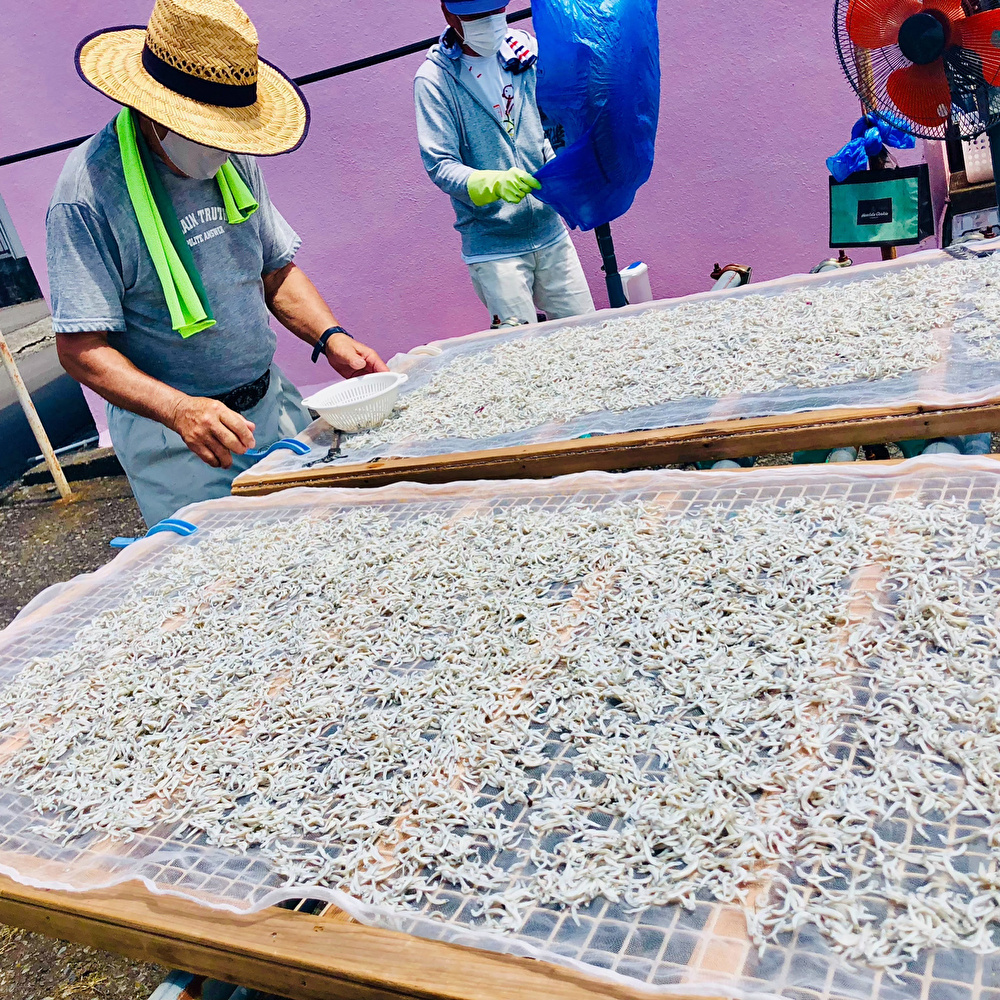
Eel is good to beat the summer heat, but Shirasu-boshi (dried whitebait) is also good. In haiku, “Shirasu-boshi” is a seasonal word for spring, but that is not the case. Shirasu-boshi can be purchased at any store throughout the year, except from December to March when fishing is prohibited. However, there are seasons for shirasu, which are from April to June and from August to October, and it is said that the fat is especially delicious from September to October. One of the characteristics of shirasu is that there are various ways to eat it, such as “Kamaage shirasu”, “Nama shirasu (raw shirasu)”, “Shirasu-boshi”, and “Chiromen-jako (boiled and dried baby sardines)”. “Raw shirasu” is best eaten as it is, but there are concerns about parasites and it can only be eaten locally. “Kamaage shirasu” is made by washing freshly caught shirasu in water, boiling it in salt water at once, draining the water, and cooling it to make kamaage shirasu. Drying boiled shirasu to about 70% moisture is called “Shirasu-boshi”, and dried shirasu with less than 50% moisture is called “Chirimen-jako”, and sometimes is called “Chrimen” or “Jako”. In the Kansai region, Hyogo Prefecture boasts the highest catch of whitebait in Japan. The amount accounts for about 20% of the domestic market share. In particular, the raw shirasu caught at Iwaya fishing port on Awaji Island is known throughout the country.
夏の暑気払いにはウナギもいいですが、シラス干しもいいものです。俳句では「しらす干し」は春の季語ですが、そんなことはありません。シラス干しは、禁漁期の12月〜3月を除いて、年中どこのお店でも売っています。ただシラスには旬があって、4~6月と8~10月で、特に9~10月の間は脂がのって美味しいといわれています。シラスには、「釜揚げしらす」「生しらす」「しらす干し」「ちりめんじゃこ」などさまざまな食べ方があることが特徴です。「生しらす」は、取り立てをそのまま食べていちばん美味しいのですが、現地でしか食べられないことと、寄生虫の心配があります。「釜揚げしらす」は獲れたての新鮮なシラスをよく水で洗い、一気に塩茹でし水気を切って冷ますと釜揚げしらすのできあがり、これなら日持ちもします。釜揚げしらすを干して7割程度の水分量にしたものを「しらす干し」、5割以下になったものを「ちりめんじゃこ」と呼び、地域によっては総称して「ちりめん」、「じゃこ」と呼ぶ場合もあります。関西地方では、兵庫県がシラスの水揚げ量で全国1位を誇っています。その量はなんと国内におけるシェアのうち、およそ20%も占めています。特に、淡路島の岩屋漁港で揚がる生しらすは全国にその名が知られています。
